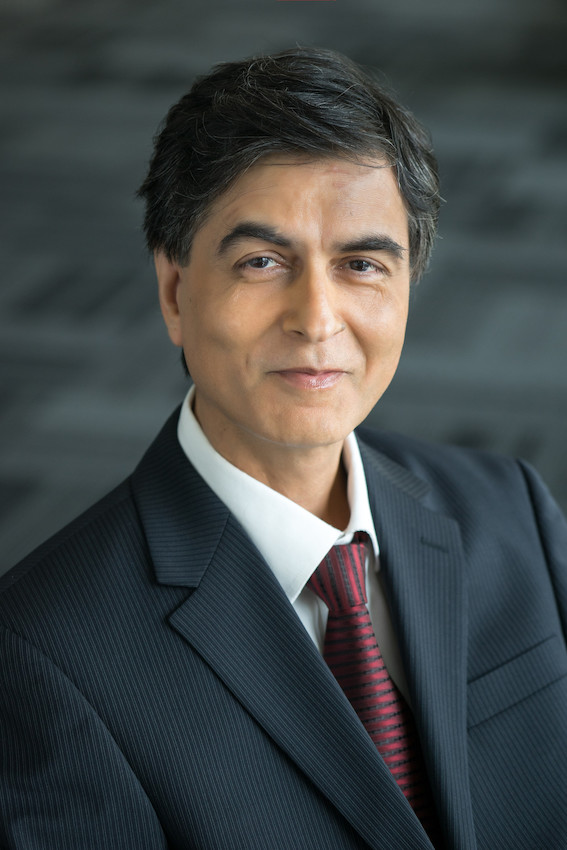
With global internet penetration crossing 50% in 2016, more than half the world is connected through cyberspace. From one perspective, this connectivity is an unprecedented leveler, breaking down barriers, freeing up information, and exposing everyone to more opinions and viewpoints on local and global issues.
Yet this great connector has also become a great divider, enabling those who are connected to coalesce into “social cloisters”—groups that are relatively small, insulated and share similar opinions and views.
Fueled by the phenomenal growth of social media platforms such as Facebook, the ether has become home to hundreds of millions of these cloisters.
People are increasingly spending time within their cloisters, sharing their day-to-day experiences, their thoughts and their feelings, and by doing so, influencing and reinforcing each other’s mindsets.

What distinguishes this level of communication from traditional (“old”) media is its vulnerability to misinformation. By and large social networks, unlike newspapers and TV, eschew wider editorial responsibility for the content they distribute. As a result people are more likely to be fed misleading content, propaganda and outright lies—the rise of so-called “fake news.”
Social cloisters have an inherent tendency to be divisive in nature. Members feed on each other’s content, share stories, and hothouse thoughts, feelings and ideas which become amplified and reinforced by transmission and repetition. This can lead to hyper-partisan behaviors, with members of the cloister embracing sharply polarized views on a variety of subjects while alternative or opposing views are suppressed or underrepresented.
What is becoming clear is that the reinforcement of cloistering by “fake news” and misinformation is having a profound influence on society as a whole. The recent U.S. election is a case in point.
Many reasons have been sighted as to why pollsters and election forecasters missed Donald Trump’s stunning victory. There are however, two noteworthy factors that should be pointed out.
Firstly, one of the implications of the fracturing and cloistering of society, both for governments as well as marketers, is that it is hard to predict the inclinations and behaviors of people, and draw conclusions for the population as a whole. Statistically speaking, not only is a much larger sample required, it is also more difficult in splintered populations to ensure that these samples are truly representative.
Secondly, as social scientists we know that it is not always easy to unlock peoples’ minds. Polls tell us only what people claim they will do. While there is always a strong relationship between these claims and what people will actually do, the bias is hard to predict.
In the case of Trump, the bias would have been substantially accentuated, considering his public image and the battering that he received from the media for his numerous indiscretions. His rival, Hillary Clinton, was not the only person who considered it “deplorable” to vote for Trump.
Stark divisions
In this context a small but significant proportion of Trump’s supporters would have been reluctant to express their intentions, because saying so might be deemed politically, socially or intellectually unacceptable. Within their social cloister, supported by others of like minds, they feel secure expressing their choices and opinions—outside of the cloister it is a different matter entirely.
So what was it that produced such stark divisions manifested in the U.S. election?
It is becoming apparent that the intensified cloistering fuelled by social networks had a significant effect. Studies have shown that social networks play a huge role in distributing news and information (with scant regard to levels of accuracy) and hence informing and shaping opinion. One report earlier this year from Pew Research found that almost half of American adults—44%—cite Facebook as their primary source of news.
In the wake of the U.S. election, several commentators have highlighted the surge in “fake news” online in the final months of campaigning, including the emergence of some operations designed to manufacture and distribute fake news specifically for profit.
Within social cloisters, powered by a steady stream of genuine as well as fake information/misinformation, the echo chamber effect would have been in full force, amplifying opinions of its members and disregarding others.
This cloistering process is a product of the radical disruption and reshaping of the media landscape driven by the still relatively recent advent of social media. But while some may see it as alarming, there will be no turning back of the clock.
Opportunity and threat
For politicians and marketers, depending on how they adapt, it can be both an opportunity and a threat. The marketing rules and perspectives that apply to social cloistering, demand changes in methods and style – listening, reaching out to and engaging with new media so that messages filter through.
This is not easy, particularly when confronted by such diversity and polarization of opinion, yet it is a challenge that must be addressed. Voters and customers cannot be swayed without empathy and understanding—and they certainly won’t be won over by being labelled “deplorable”.
A similar approach needs to be taken in dealing with the challenge of misinformation and fake news. This has such impact and reach because it is made to be sensational and demands to be shared. It is, in effect, gaming the system—packaged to appeal to the emotions of social cloisters.
In addition to reaching out to a fractured population, marketers and politicians must compete with this bogus content for their mindshare. At the same time, of course, many of them are spreading their own spurious content—falling to the easy temptation of if-you-can’t-beat-them-join-them.
This race to the bottom should be resisted. Purposeful lying or intentional misrepresentation should never be condoned; misinformation is a social problem that needs to be contained.
Yet it is highly debatable what measures are needed to stem the problem. Every person has their own views on freedom of expression.
It is a debate that has run for many years. What matters is that rather than condemn the problem we seek harder than ever to understand it.

